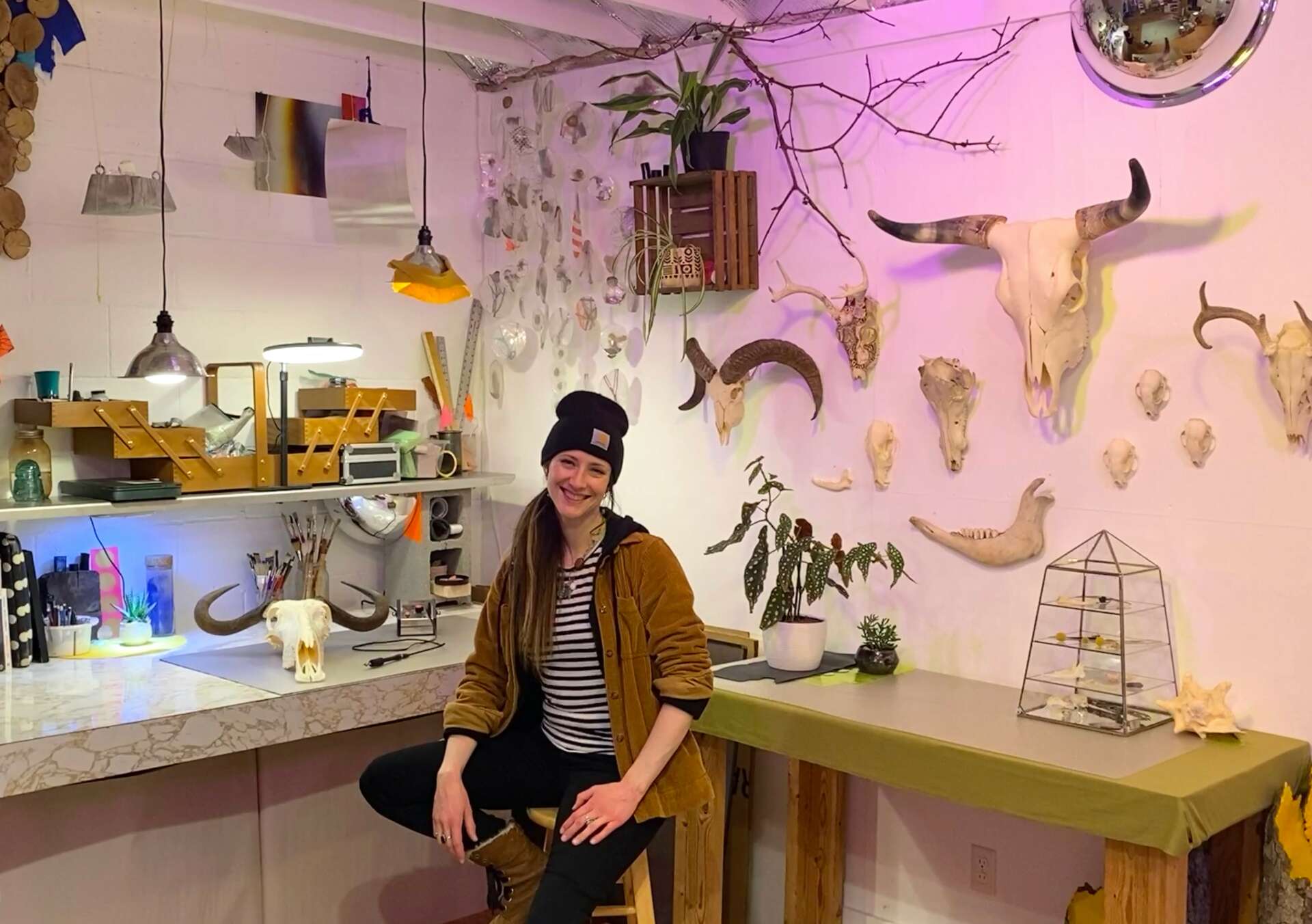We were lucky to catch up with Arienne Zimmerman recently and have shared our conversation below.
Arienne, thanks for joining us, excited to have you contributing your stories and insights. How did you learn to do what you do? Knowing what you know now, what could you have done to speed up your learning process? What skills do you think were most essential? What obstacles stood in the way of learning more?
Much of my creative process has to do with materials: collecting, scavenging, and finding ways to use them in my artwork. My journey as an artist has always involved a lot of variety. Drawing, sculpture, installation art, photography, printmaking, and graphic design just to name a few of my areas of interest. One of my ongoing projects has been burning artwork onto animal skulls. As a collector of many things, animal bones have always been of interest to me. Just before my acceptance into graduate school to begin my MFA in 2017, I began experimenting with using woodburning tools to burn art onto bones and skulls. This process is called pyrography. While this project was not an area of focus during my graduate studies, I continued to work on it on the side. After completing my first burned skull, I was approached about doing a commission by a local business owner. Following this project, several more people expressed interest in commissioning skulls, then several more, and I’ve continued my small art business ever since.
I learned to do what I do because of my passion for experimenting creatively. I was just curious if I could draw art onto bones using a burning tool, so I tried it and loved the results. The skills that are most essential to this form of art are drawing skills and a ton of patience. I would describe this process as a type of drawing. It is an extremely slow process, and burning onto bone requires very high heat. I use a variable temperature burning tool that gets up to 1400*F. The artwork is also (obviously) permanent, so knowing how to work with mistakes and understanding the materials is also pretty important. It can be a little intimidating to begin burning and creating permanent marks on a beautiful skull, which can be quite costly depending on the animal. The skulls are basically like my very expensive, oddly shaped pieces of drawing paper! Just like all other art forms, the way to learn more and become better with pyrography is through practice and spending time on it. And I would say the main obstacle I have encountered in developing my craft is time. Up until this past summer, I have always kept my artwork and commissions on the side, while I worked my day job as an art teacher. Then, in 2023, I decided to leave my 13-year career in art education and pursue a new direction.
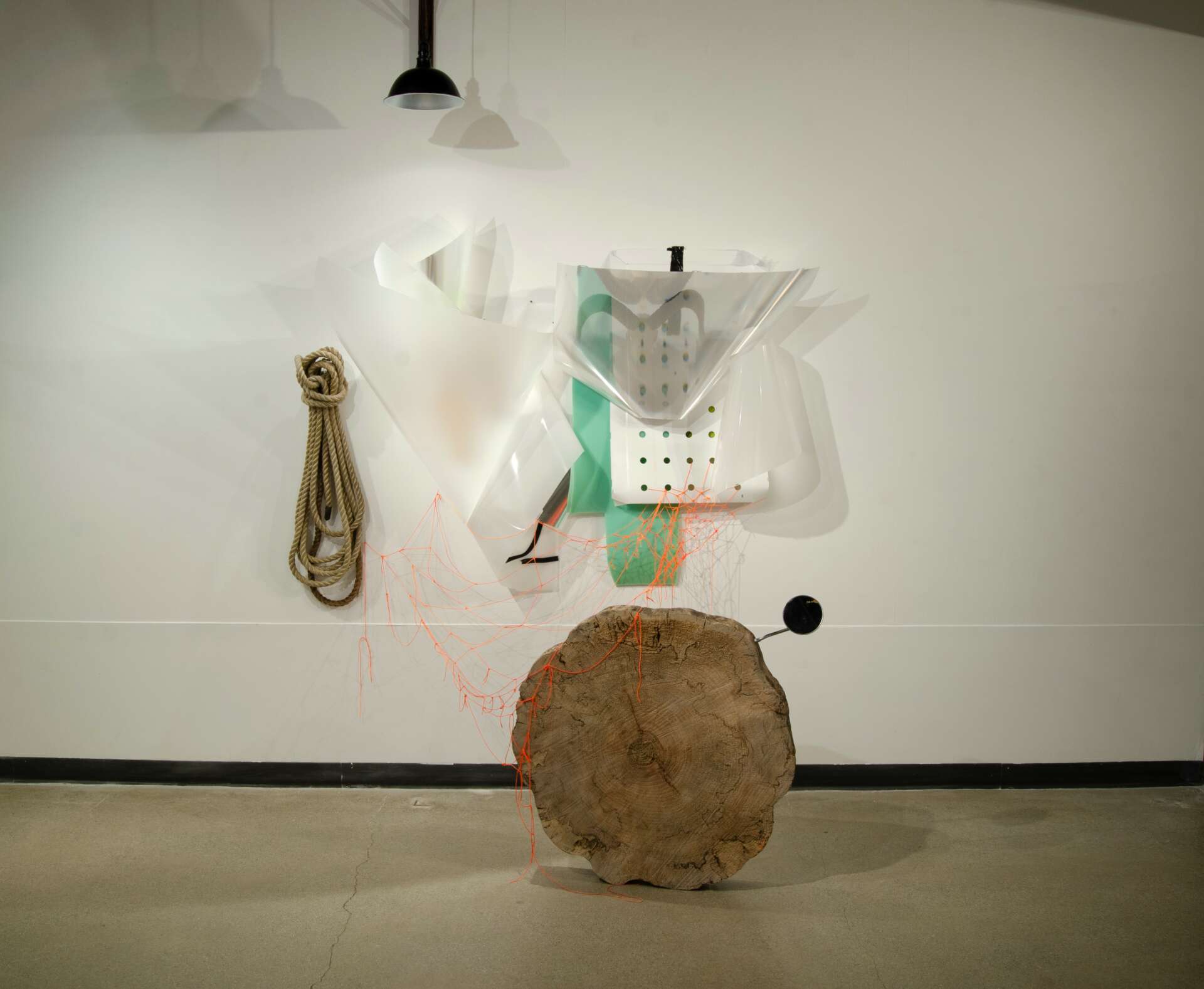

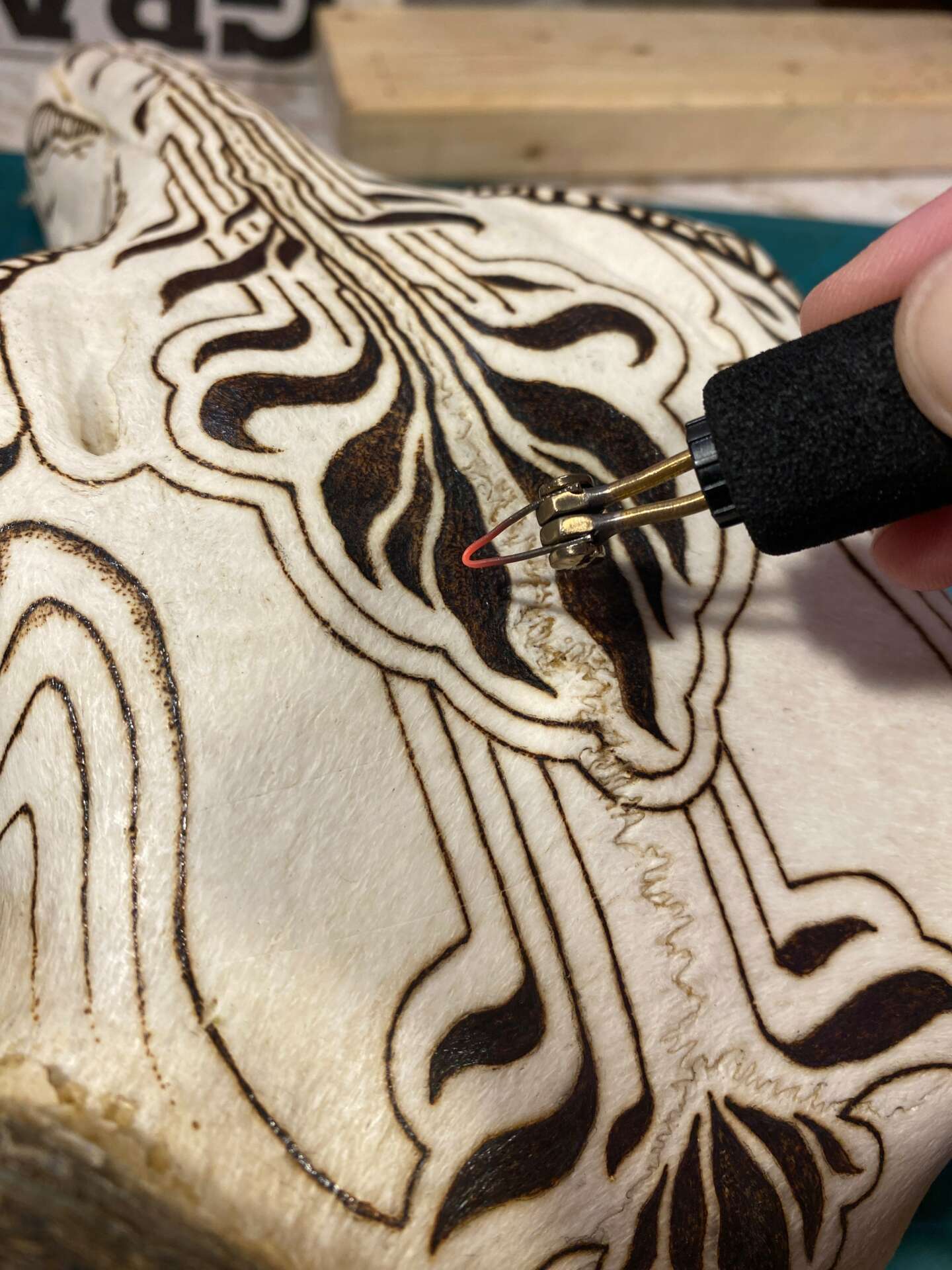
Great, appreciate you sharing that with us. Before we ask you to share more of your insights, can you take a moment to introduce yourself and how you got to where you are today to our readers.
To share a little bit more about myself, I am a visual artist living in southeast Michigan. My mother was an art educator and had a big influence on my choice to follow the same career path. In 2009 I received my bachelor’s degree in art education and began teaching K-8th grade art part-time at several different schools. My dad has also had a strong influence on my work from a young age. He gave me my first wood-burning tools when I was young, which later led me to explore pyrography as an art form.
In 2017, while still teaching, I decided to apply to graduate school to pursue my master of fine arts degree. Initially, when I began grad school, I had planned on drawing as my area of concentration. By the time I had completed the MFA program in 2020, much of my work had evolved into installation art and mixed media sculptures. Today, I still work quite a bit with found materials and create mixed media art, however, the pandemic had a big impact on my art. In the spring of 2020, I graduated at the same time that the world shut down. For months I was without access to my art studio and many of my materials. As a result, I began simplifying my creative process by limiting materials and working on a smaller scale. I also began taking pictures as a form of visual journal. Photo journaling became a way for me to continue collecting objects, colors, patterns, and textures without needing a physical space to store them in. I also began working on my skull pyrography projects more regularly. While I do love my vast collection of materials, and working creatively with a wide variety of colors and textures, I also love the simplicity of the pyrography. The materials are simple and natural, just heat and bone.
Fast-forward a few years: In the spring of 2023, I made the challenging decision to leave my 13-year career in art education for new growth opportunities. Immediately upon the end of my time teaching, I got to work completing two commissioned skulls that had been put on hold due to my teaching schedule. This time, I decided to document my process by taking pictures and videos and posting them on social media. Sharing my work in this way, as well as in conversations with people has led to additional art commissions and a growing number of followers. I have room to grow in my social media presence, but it has been such a helpful tool to get my work seen. Since much of the time spent on my skull pyrography has been commissioned, I have not sought out shows or galleries to exhibit my art publicly. But social media allows me to have my art seen without having to rely on shows, and it gives me the chance to invite thousands of viewers virtually into my art studio to see my creative process.
I think the things that set me and my art apart from the art of others are the materials and process. Burning art onto skulls is not terribly common (it also does not smell great, as you can imagine). When creating custom designs for commissions, I begin by just talking to the person and connecting with them. I try to find ways to integrate things that are personal and specific to them into the work. I spend a significant amount of time planning the design. It has to work together with all the curves, spaces, textures, and forms of that specific skull. They really are so beautiful on their own, without any art. I want to feel that the quality of the art and the time spent on it is honoring to that animal’s life. Pyrography as an art form is unique because it neither adds nor takes away material like many other art processes. Instead, it changes the material surface, resulting in varying tones of sepia from the reaction to heat. Because of this, the art becomes one with the skull. I often think of it as similar to tattooing or branding. In a way, this process gives a decorative skin back to the animal.
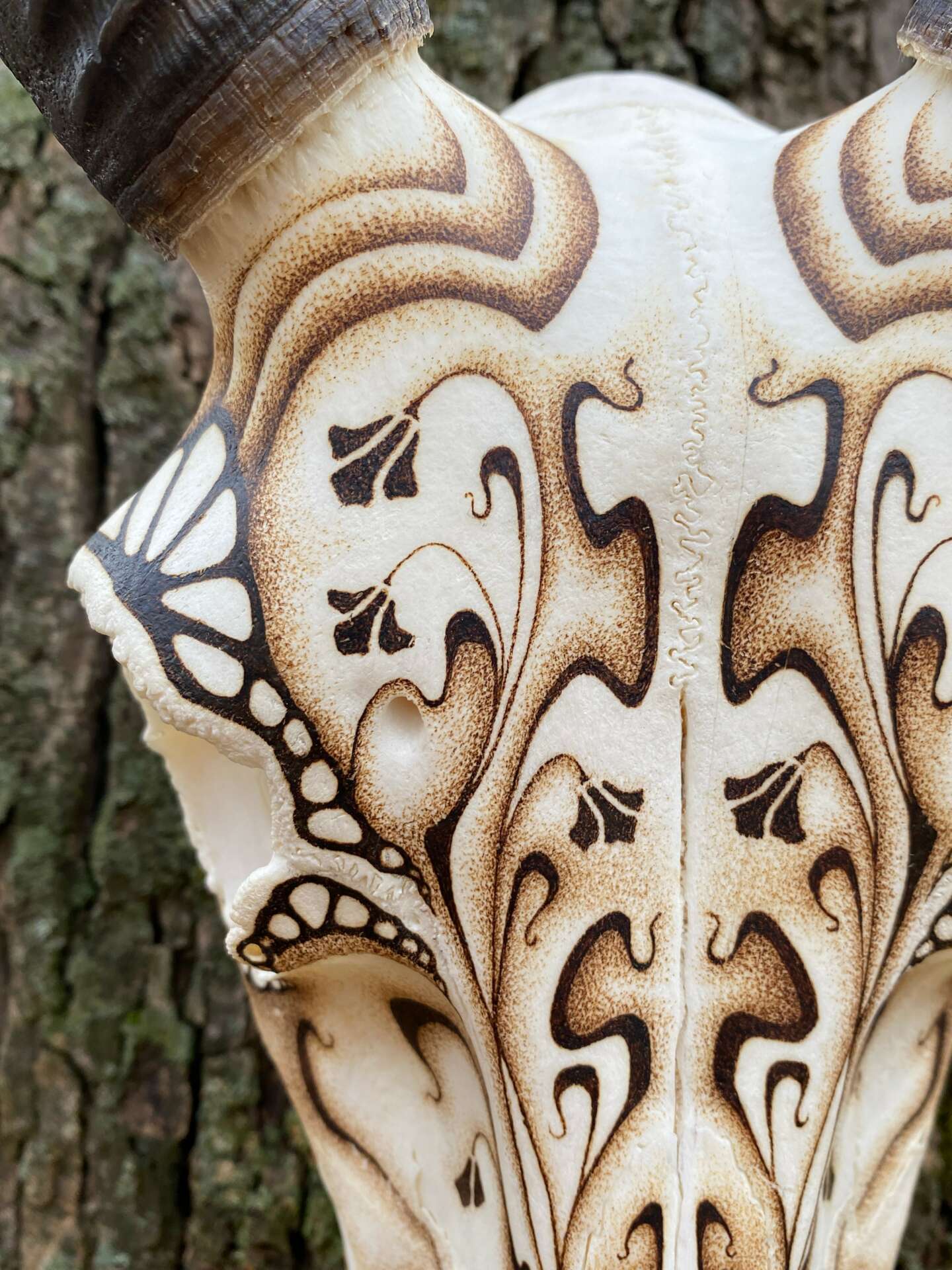
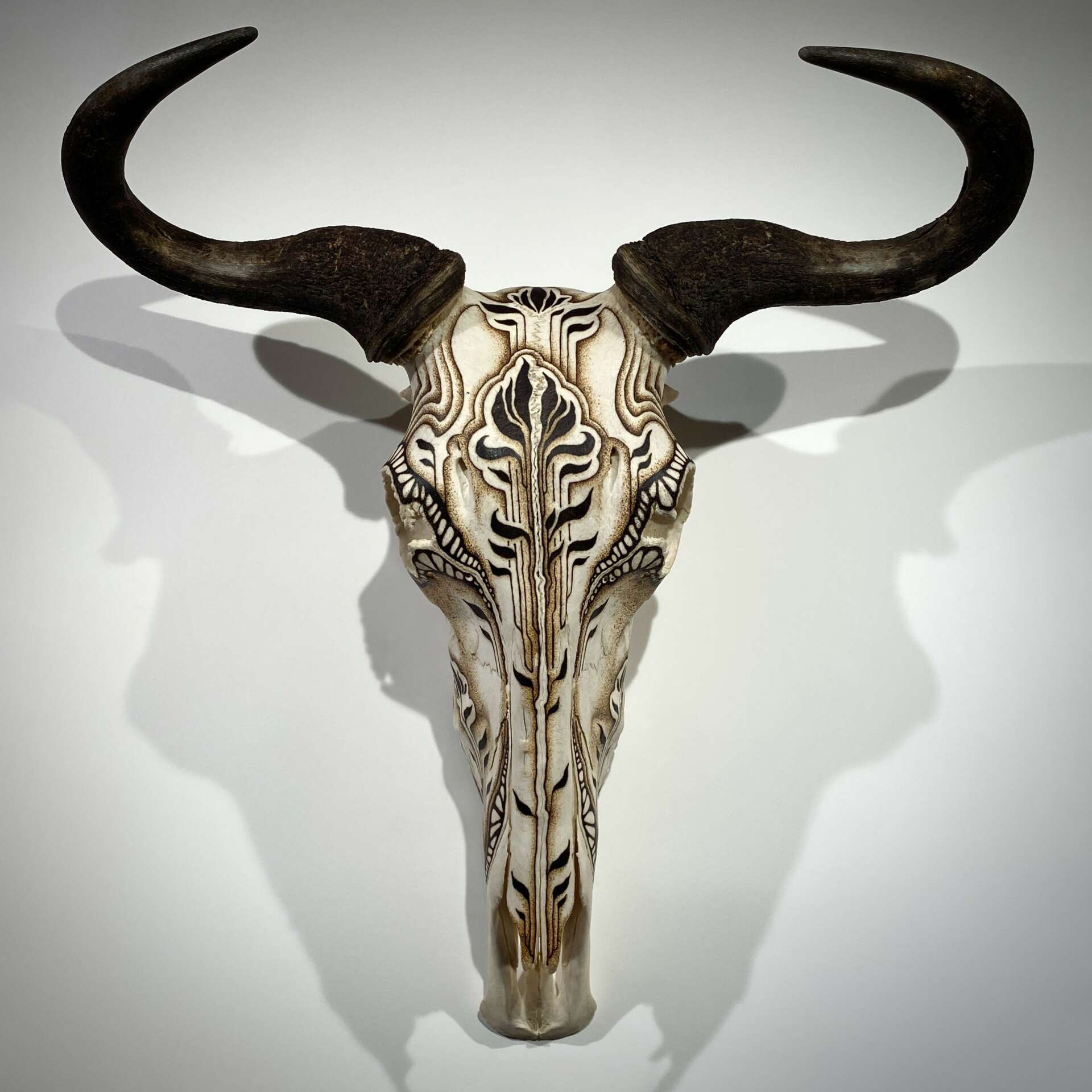
How about pivoting – can you share the story of a time you’ve had to pivot?
For the past 13 years, I have worked as an art educator, teaching students in grades K-8 at multiple private schools. After the schools mostly returned to normal following the pandemic, I knew that I was ready for some new career challenges and personal growth. The decision to leave teaching was very difficult, but I knew that creating that space in my life would allow me to seek new opportunities. In the spring of 2023, I made the decision to not return the following school year. My career goal was to pursue a role that would allow me to apply my instructional skills along with my design expertise in the learning and development field. Simultaneously with this career pivot, I began working on several art commissions that had been put on hold because of my teaching schedule. These commissioned pieces of artwork ended up opening doors to opportunities and growth in my art career. When people ask what kind of art I do, and I tell them I burn skulls, they’re often genuinely interested to know what I am talking about and curious about the process. Using social media platforms to showcase my creative process and artwork has allowed me to get my work in front of so many more viewers than I would be able to otherwise. Because of this, I have continued to get regular work with my art commissions. I would say my career pivot is going differently than I had planned, but I am extremely lucky and grateful to have the opportunity to put this time into growing my art career.
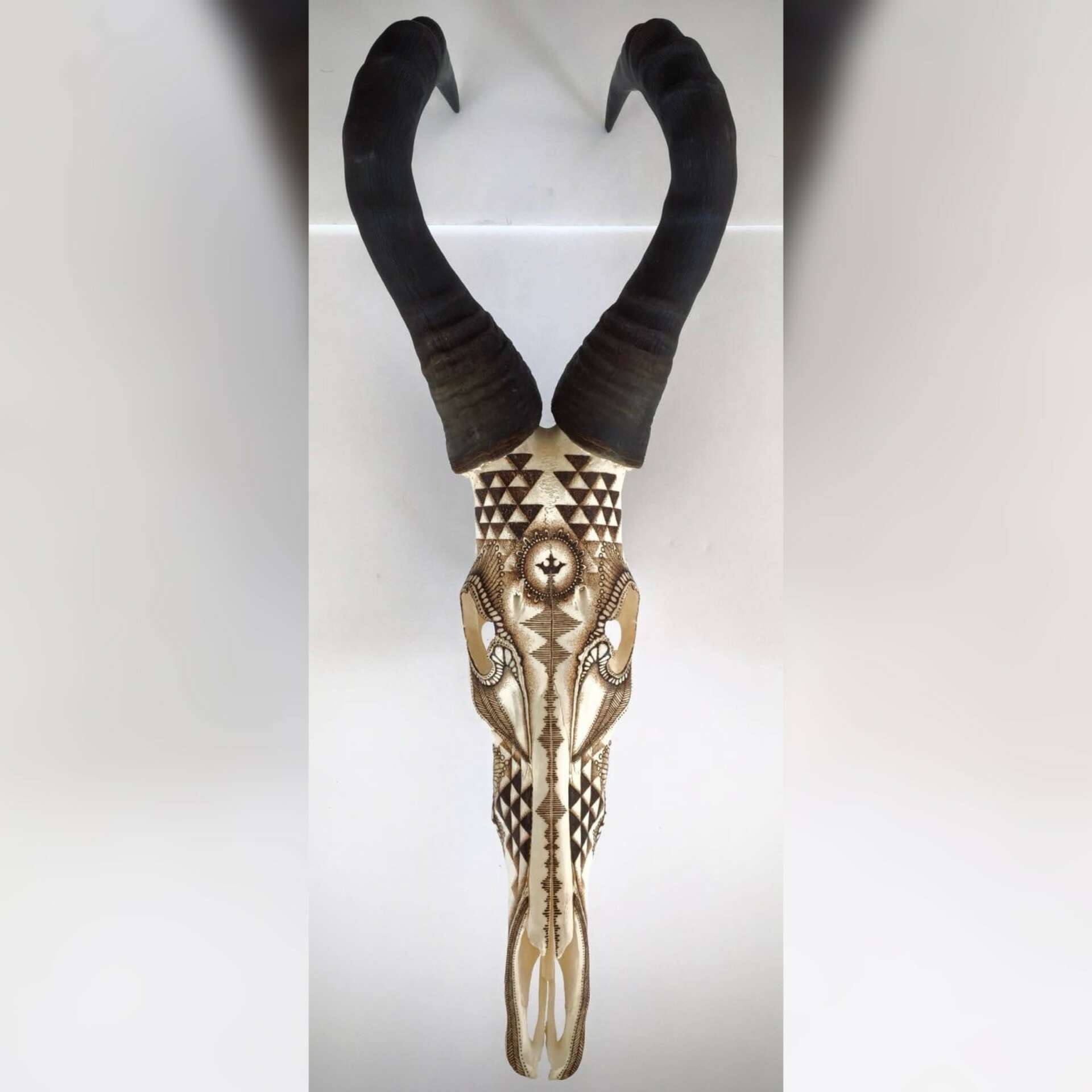
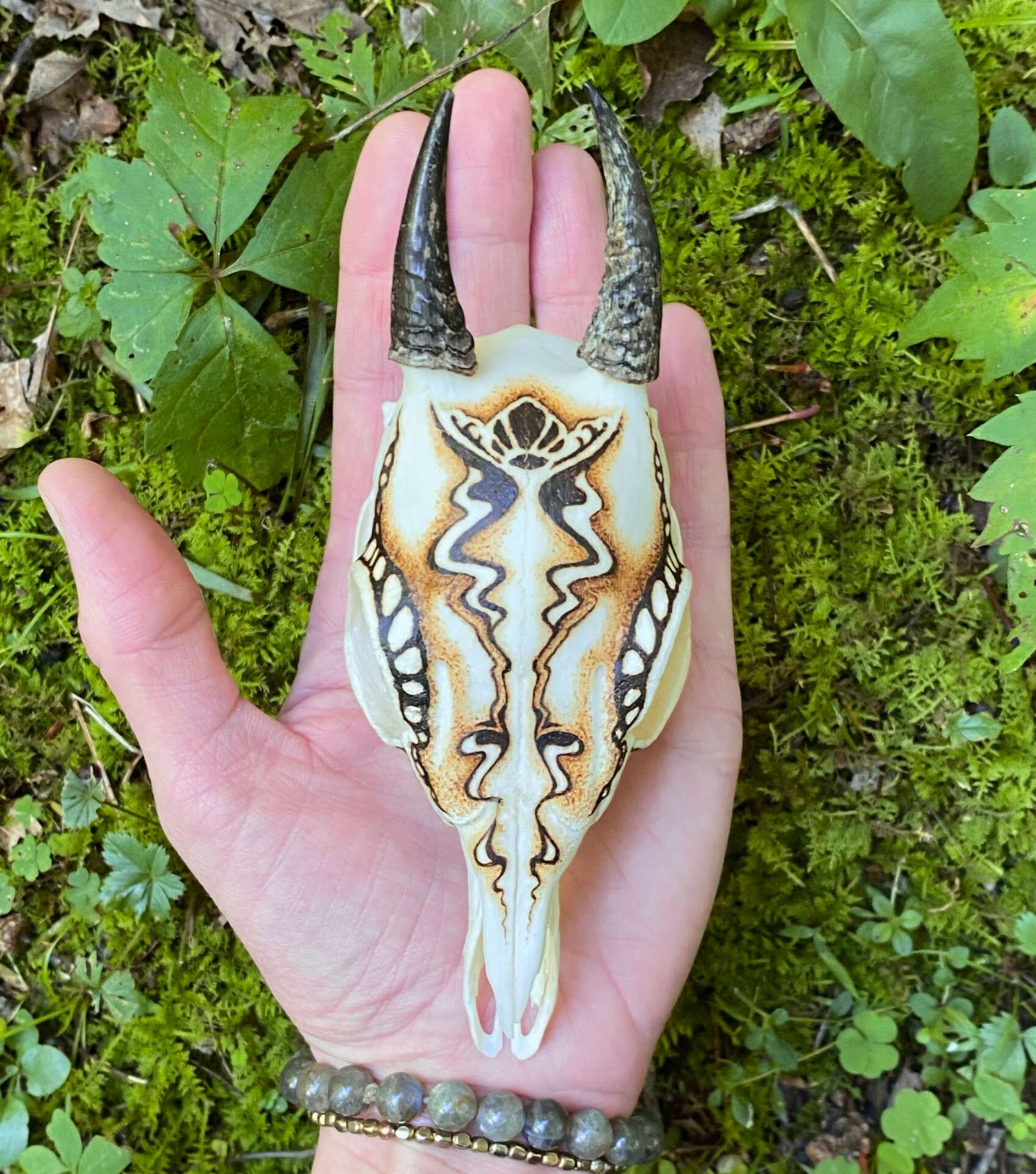
How can we best help foster a strong, supportive environment for artists and creatives?
In my view, society can best support artists and creatives by connecting with them, following them, and sharing their work with others. Also by considering purchasing handmade art and goods over mass-produced items. Every dollar we spend is like a vote for what we want in the world. If all of our votes go towards mass-produced and cheaply made goods, then that’s what we’ll get. If we want a thriving creative ecosystem, we have to consciously make that decision. I know that purchasing original, handmade artwork is an investment and a very personal decision. Not every person will be a customer. But anyone can show support by connecting, following, and sharing with others.
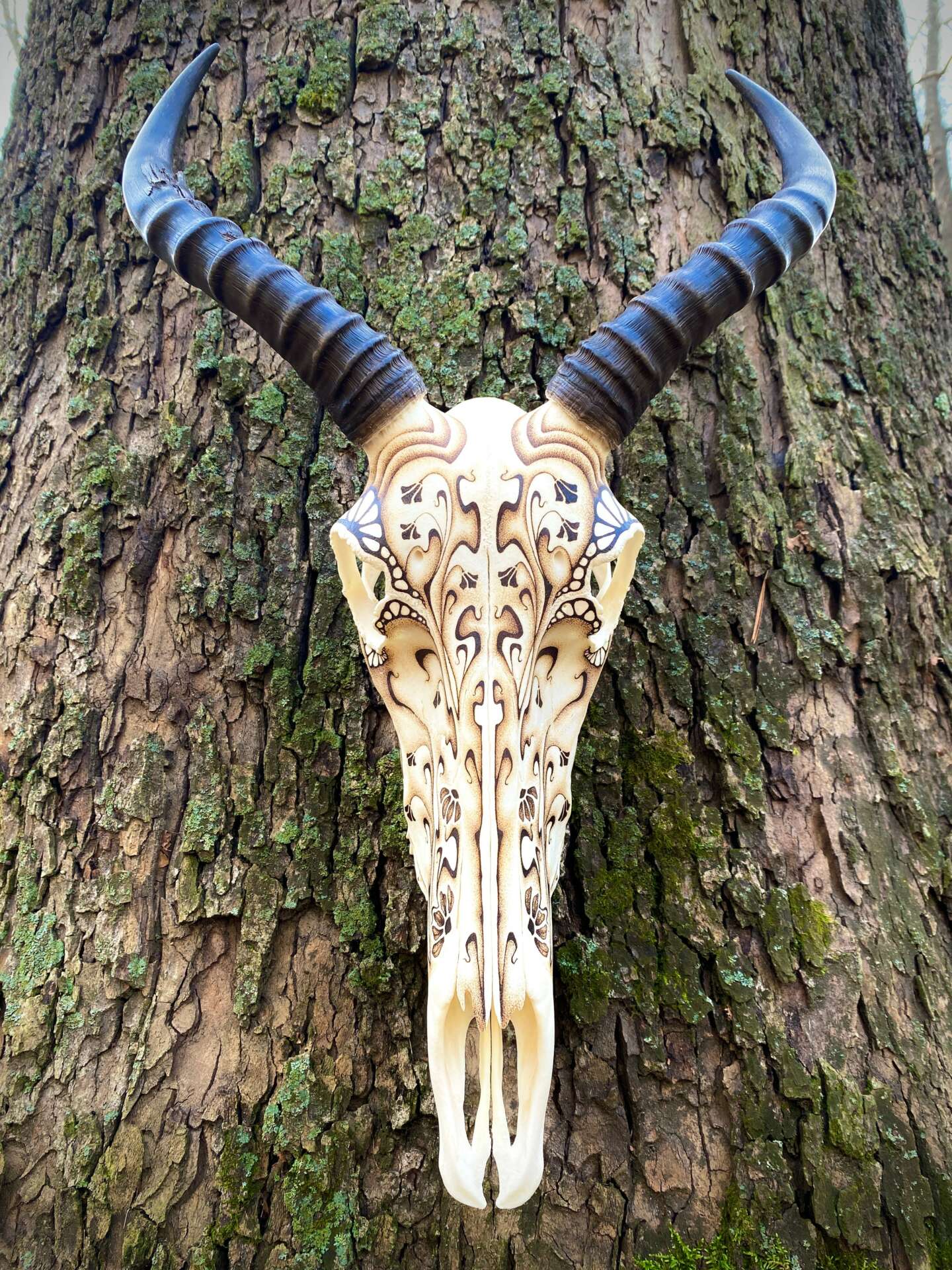

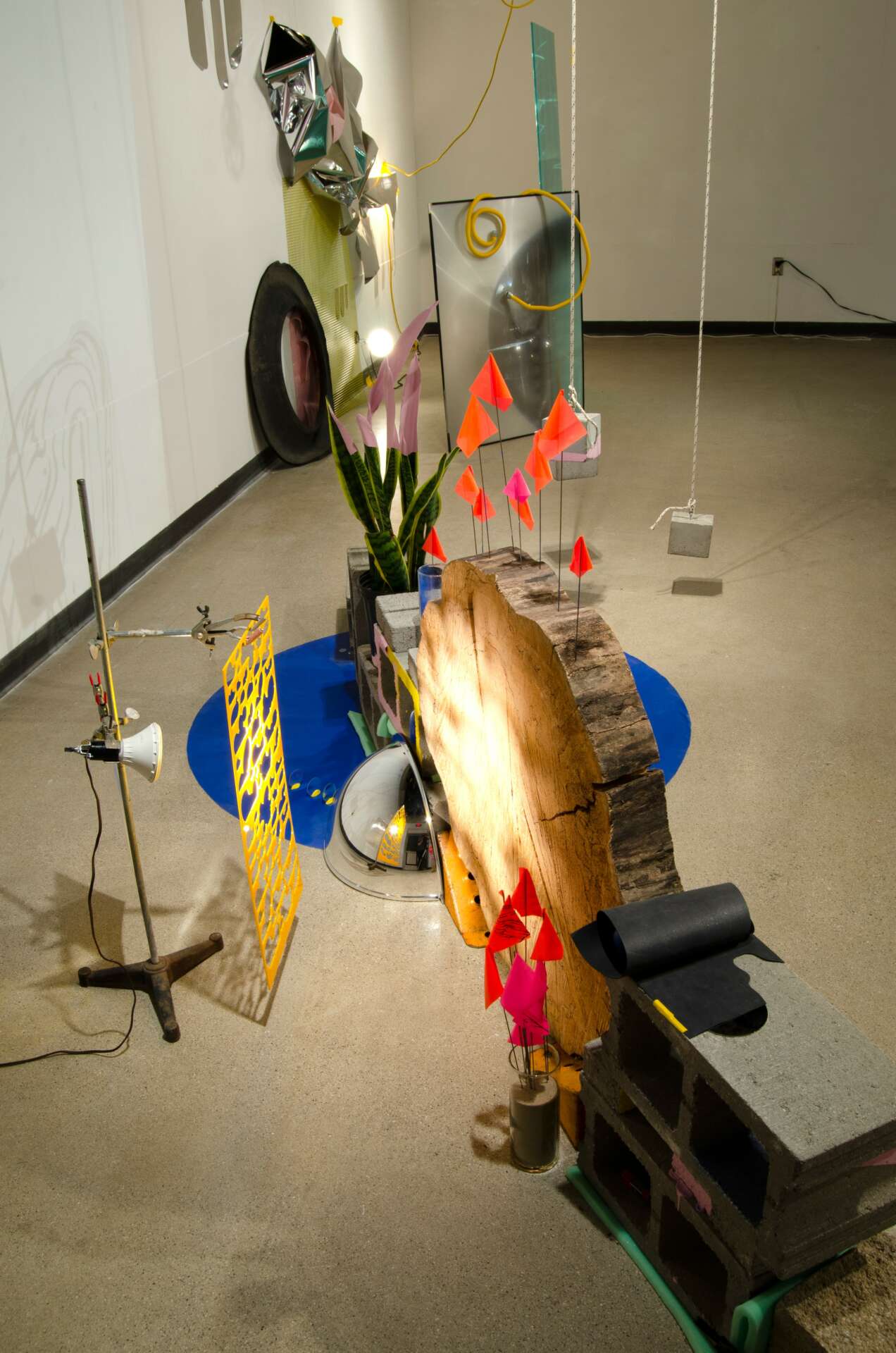
Contact Info:
- Website: https://www.ariennezimmerman.com/
- Instagram: https://www.instagram.com/ariennezimmerman
- Facebook: https://www.facebook.com/arienne.zimmerman
- Linkedin: www.linkedin.com/in/ariennezimmerman
- Twitter: https://x.com/ariennezim
- Other: TikTok: https://www.tiktok.com/@ariennezimm


